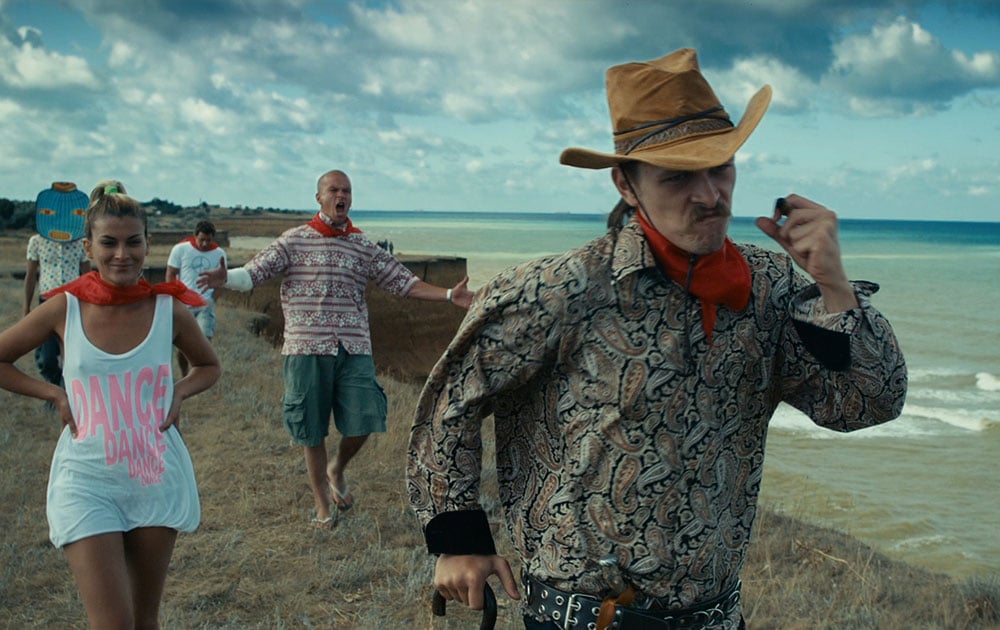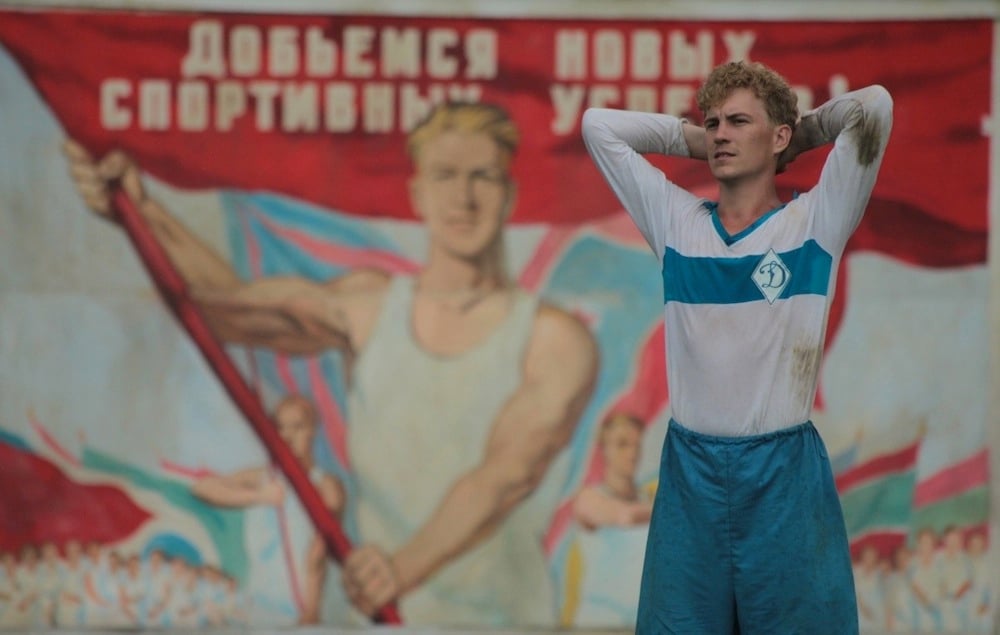Ghostbusters: Russian cinema comes to terms with the Soviet Union

In recent years, Russian cinema has seen a new vogue for government-backed, patriotic nostalgia for the Soviet Union. But, Andrei Kartashov contends, there are filmmakers out there who are bucking the trend and freeing the screen from its USSR obsession
In the Communist Manifesto Karl Marx and Frederick Engels famously asserted that: “A spectre is haunting Europe — the spectre of communism.” In today’s Russia, this metaphor has acquired a new, quite ironic meaning. The Soviet Union may be long gone, but in Russian society no consensus on the Soviet past has been worked out and almost every debate on economics, politics or anything still uses the USSR as a benchmark for comparisons, which can be both critical and laudatory in regard to “the unbreakable union”, as the old national anthem used to call it. The not-quite-so-unbreakable USSR was declared dead in 1991, but it was never buried — and that makes modern Russia an enormous haunted house of a country.
It’s not surprising, therefore, that the Soviet past remains a sensitive issue in contemporary Russian film. On the one hand, there is a certain tendency to denounce it, exemplified most conspicuously by Alexei Balabanov’s Cargo 200 (2007) — a remarkably morbid film even by the standards of the grim chernukha genre. There is, however, another, stronger, tendency towards a certain nostalgic glamourisation of the Soviet Union and the glorification of its military power. The latter trend, common in state-funded period pieces, is very publicly encouraged by the powers that be: the Soviet Union’s superpower status and assumed stability is a perfect excuse for Putin’s reactionary policies — reversion to Cold War rhetoric, the abandonment of electoral procedure, the establishment of a single-party system and anything else you might have read about in the news. While some of these movies are overtly pro-Soviet, some, like Vysotsky: Thank God I’m Alive (2011), a biopic of cult singer-songwriter Vladimir Vysotsky, and romantic drama Vanished Empire (2009) — note the telling title — are subtler, focusing primarily on the nostalgic recreation of the past. It’s a surefire way to reach the hearts, and wallets, of an older audience.

The terrifying world of Timur Bekmambetov’s Night Watch (2004)
The two hits that started this trend for Soviet-tinged escapism, Timur Bekmambetov’s Night Watch (2004) and Day Watch (2006), are actually quite ambiguous in their attitude towards the USSR. In these fantasy epics one of the two warring supernatural groups is associated with the Soviet Union, and the other with the new Russia. The former, with their Volga cars and shabby headquarters at Gorsvet (a Soviet-style abbreviation for City Light Office) are, in fact, the good guys. Their opponents, known as the Darks, prefer foreign convertibles and hold parties in fancy hotels with real-life celebrities. Nevertheless, the noirish tone of both movies prevents the viewer from inferring any definite moral judgements, and the importance of both sides is emphasised throughout. The difference between the two groups lies in their philosophies, leftist altruism versus liberal individualism, which makes the conflict more complicated than the same old good versus evil.
But not long after the Watches, Bekmambetov succumbed to the temptation to become part of a wave of nostalgic exploitation. In his Irony of Fate 2 (2007), he once again tried to marry Soviet aesthetics with wannabe-Hollywood splendour, only this time it wasn’t critical or problematic: filmgoers were treated to a gross sequel-cum-remake of a Soviet classic that’s been a staple of the New Year’s Eve broadcast for 30 years.
Gromozeka (2011), dir. by Vladimir Kott
It is this self-same phenomenon of nostalgia that is explored in Vladimir Kott’s Gromozeka (2011). For the three protagonists of this kitchen-sink drama dreams of the past are a way of escaping from the despair of midlife crisis. All three share the same memories of childhood, a time when the future was bright and hopes were high. In particular they reminisce about the band they were in at school, the eponymous Gromozeka; the band itself is named after a character in Soviet teen sci-fi series The Adventures of Alice, which told tales of a utopian communist Neverland. Several famous child actors are present here in the flesh: the girl who played Little Red Riding Hood in a celebrated 1977 TV movie now plays a single mother who has lost her child; a former Pinocchio has grown up to become the depressed head of a hospice. In contrast to properly nostalgic films like The Irony of Fate 2, however, these echoes of the past come together to form a modern story.
Kott, who was born in 1973, witnessed the collapse of the USSR in his teens. This is also the case with Boris Khlebnikov, who, in his own way, dealt with the Soviet past in 2009’s critical darling Help Gone Mad. When the unnamed character played by Anna Mikhalkova visits her delusional dad’s flat in a hopelessly humdrum neighbourhood, she comes across an archaeological deposit of children’s books. Meanwhile, her restless father is busy with a series of quixotic, inexplicable deeds meant to help humanity: at one point he remoulds a dozen clay penises into statues of Soviet leaders. As this absurdist story unfolds, we come to realise that it’s a small-scale canvas of Russian life — a Brueghelian landscape in which the Soviet element occupies its own part but nothing more.
Chapiteau Show (2011), dir. by Sergei Loban
Sergei Loban’s instant cult classic Chapiteau Show is more ambitious (it’s four hours long, for starters), but it still has much in common with Help Gone Mad. A sort of sots-art version of Fellini’s Amarcord, Chapiteau Show is a patchwork of images from deep in the Russian cultural memory. Kitschy and outdated Crimea, a popular seaside resort in the era before visa-free trips to Egypt. A lookalike of Eighties’ rock idol Viktor Tsoi on tour. A pack of bohemian twentysomethings in Pioneers’ scarves. The film consists of four intersecting stories corresponding to basic models of human relationships — love, friendship, respect and collaboration — that are deconstructed one after another. At the end of every segment, the characters end up in a circus tent watching a surreal show starring, amongst others, a cosmonaut bear, Marilyn Monroe and a humanoid washstand from classic children’s poem Moydodyr. This is the titular chapiteau show — a stream of images from the subconscious.
Kott, Khlebnikov and Loban don’t fit into any definite movement: they have different styles, different backgrounds and different philosophies. This is not a “new wave” or anything like that. If anything, they resemble the motley crowds of recent political protests — liberal democrats, socialists, nationalists and gay activists, unified only by their antagonism to the current situation. What the three directors have in common is a craving for something new. They don’t remember the time before perestroika, so there’s no obsession with the USSR: they don’t want to sing the praises of it, but nor are they interested in tilting at the windmills of a political regime that expired 20 years ago. Instead they come to terms with the past by admitting that it is, in fact, the past — still to some extent present in contemporaneity, but merely as a background for new stories. The vanished country is transformed from a Pandora’s box into a tin box of memorabilia, full of toy soldiers, badges with portraits of the young Lenin and other bits and pieces from an ordinary Soviet childhood.
Hipsters (Stilyagi; 2008), dir. by Valery Todorovsky
The three aforementioned films are all indies: sadly, only very rarely does such an apolitical approach to the Soviet get beyond the ghetto of limited releases. One of the few films that does is Stilyagi, a high-budget, festive take on the Fifties jazz subculture about a 20-year-old named Mels (short for Marx-Engels-Lenin-Stalin) who falls in with a group of bright young things. Predecessors of the cheerful crowd in today’s Moscow bars, these scenesters try to enjoy life despite the besieging greyness. In the grand finale Mels walks down Tverskaya Street and is gradually joined by hippies, bikers, punks and other nonconformist youngsters from the generations to come — times change, people don’t. Internationally the film is marketed as Hipsters — a brilliant case of found-in-translation serendipity that makes the ties with present day even stronger.
In terms of box office, Stilyagi did reasonably well, but it didn’t match the success of The Irony of Fate 2, the highest-grossing Russian film of all time. But there is no need for despair: Irony’s money came mostly from the older generation, who, in general, aren’t seen in cinemas very often. Teenagers and young adults, the dominant movie-going demographic in Russia (as elsewhere), are not interested in the resurrection of dated Soviet mythology. Raised in a post-Soviet era, they yearn for something new. Which means that the spectre of communism can now be laid to rest. Ashes to ashes, dust to dust — Amen.



